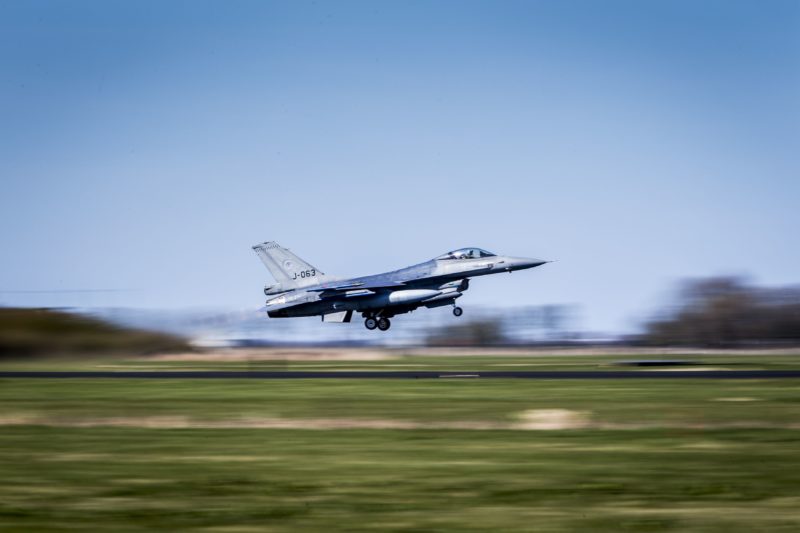Bulgaria parliament ratifies costly deal to buy eight F-16s
The F-16 jet is a mainstay fighter for several NATO member states and US allies. Its Block 70/72 variant was uneiled in 2012 and has been sold to Bahrain, Greece and South Korea (Siese Veenstra)
Sofia (AFP) – Bulgarian lawmakers on Friday ratified a hefty $1.3-billion deal to buy eight F-16 fighter jets from the US in the country’s biggest military equipment purchase since the fall of communism three decades ago.
Defence Minister Krasimir Karakachanov justified the big sum — significantly higher than what other countries have paid for F-16s — as the NATO member’s first such purchase and said the government hoped for bigger discounts in the future.
“Bulgaria will be the first Balkan country to have this brand-new version of the aircraft,” he said.
The hefty outlay required the parliament to also vote to extend the country’s deficit to cover the purchase.
The deal with the US government, equivalent to 1.1 billion euros, is for eight F-16 Block 70 multi-role fighters — six of them single-seaters and two of them two-seat jets — to replace the NATO country’s ageing, Soviet-built MiG-29s.
Lockheed Martin, the US manufacturer of the F-16s, said the US fighters have technology that features in more advanced jets such as the F-35 and F-22.
It boasted in a statement they were “a proven, capable, low-risk and cost effective solution for Bulgaria’s national and NATO defence needs”.
The total price paid covers the planes themselves as well as maintenance, pilot training and air-to-air missiles.
– Debate over high price tag –
The US is expected to cover $60 million of the maintenance and pilot training costs, which would lower the bill for Bulgaria, but that measure is still pending US Congress approval, Karakachanov said.
By way of comparison, Slovakia last year signed an order for 14 modern F-16s for a total of $1.8 billion (1.6 billion euros) to also replace its old MiG-29s. That deal also included missiles, training and support.
Bahrain also bought 16 similar F-16s last year for $1.1 billion last year.
Delivery of the jets for Bulgaria are to begin mid-2023 and the last are to arrive in early 2024.
The high price tag triggered heated debates among lawmakers in Bulgaria, with the opposition criticising the government’s failure to negotiate payment in instalments.
To finance the deal, the parliament agreed to increase the country’s 2019 budget deficit from a planned 0.5 percent to 2.1 percent of GDP.
The head of Bulgaria’s air force, Major General Tsanko Stoykov, justified the expense as way to get the poor country, which borders the Black Sea and Turkey, out of “a technological stalemate”.
His force’s fleet was “in dire need” of modernisation, he said.
Bulgaria, which joined NATO in 2004, currently uses a fleet of three-decade-old MiG-29s, of which only seven are still fit to fly.
The deal with the US was made after considering rival offers from Sweden for 10 new Gripen fighters, and from Italy for eight used Eurofighters.
Bulgarian President Rumen Radev — a former pilot and air force commander — favoured the far more affordable Gripen bid. He said the government agreed to trim F-16 armaments and capabilities to cut the price tag with the US.
Disclaimer: Validity of the above story is for 7 Days from original date of publishing. Source: AFP.


